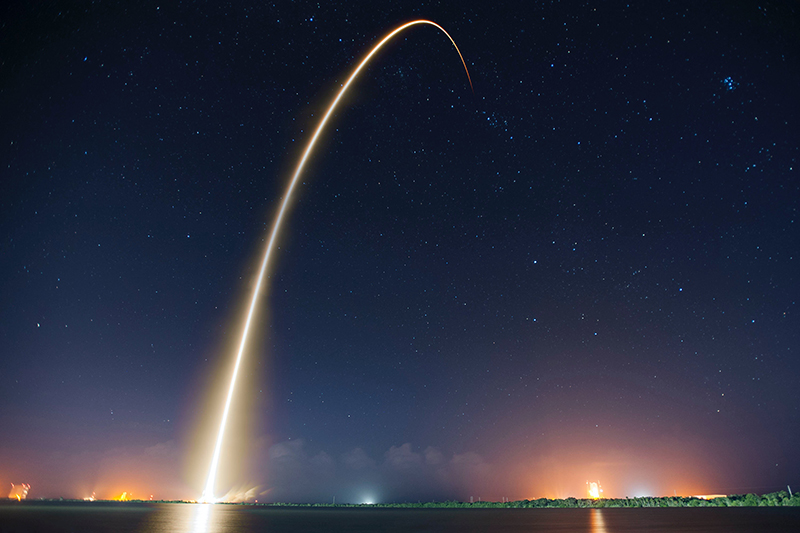Space rockets are machines that have the ability to fly into space by exceeding escape velocity, escaping the gravitational force and remaining in orbit, or continue on their way on missions that include exploration probes to other planets or bodies. Of the solar system. They use an internal combustion engine, whose fuel can be solid or liquid, while their mode of operation can consist of a single-stage or multi-stage rocket.

In the latter case, its operation is that each phase enters into combustion one by one, and each time the fuel in one phase runs out, it is discarded until it ascends through the rest of the phases. The payload goes on the top end of the rocket, which may consist of artificial satellites, an astronaut crew, or an interplanetary probe.
It is expected that in the future more efficient rockets will be developed, as well as propulsion systems that provide enough energy for long missions.
The most famous type of rocket used in astronautics is the Saturn V, which served for the Apollo missions that went to the Moon, while among the most famous probes are the missions Voyager, Mars Exploration Rovers either Cassini-Huygens.
Space probes
 Space probes, on the other hand, are true scientific laboratories reduced to the size of a device, sometimes no larger than the size of a car. Their purpose is the study of objects in the Solar System, such as planets, asteroids or comets, and they are equipped with a series of instruments that allow them to collect a large amount of data on the object of study.
Space probes, on the other hand, are true scientific laboratories reduced to the size of a device, sometimes no larger than the size of a car. Their purpose is the study of objects in the Solar System, such as planets, asteroids or comets, and they are equipped with a series of instruments that allow them to collect a large amount of data on the object of study.
They usually include cameras, radars, devices measuring various types of radiation, spectrometers, etc. All must have solar panels to be powered by the Sun's energy, as well as, in the case of interplanetary probes, thermal protection shields to withstand entry into the planet's atmosphere.


